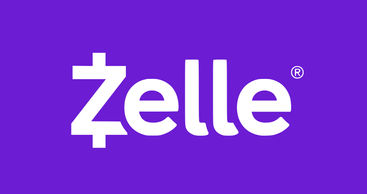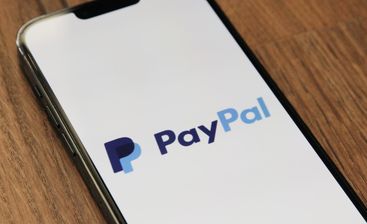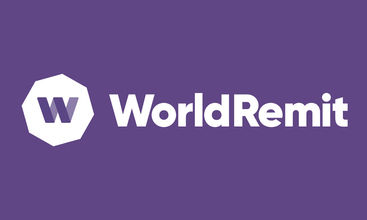Fintech has revolutionized money transfers both domestically and internationally over the past decade or so, and the trend is still positive, with 66% of smartphone owners preferring to use an app for their transfers.
Users love their convenience as all your transfer needs are served in a completely optimized and visually appealing digital package. Apps eliminate the need to carry cards or memorize any details — all of this is done with a few clicks on your smartphone.
Here’s a rundown of the best money transfer apps in the business:
The Best Money Transfer Apps for 2023
Top Options at a glance
Best money transfers app for mobile: Wise
Fastest app for domestic transfers: Venmo
Best for sending large amounts domestically: Western Union
Best for sending large amounts abroad: OFX
Cheapest transfer app for international transfers: TransferGo
Fastest app for international transfers: Xoom
Best app with most transfer options: WorldRemit
Best money transfer app for small businesses: PayPal
Best money transfer app for getting paid: Revolut
Best P2P money transfer app: Cash App
Best bank-to-bank money transfer app: Zelle
Best Money Transfer Apps Compared
App | OS | Minimum Transfer | Transfer Speed | Fee | Reviews (Google Play / Apple Store) |
|---|---|---|---|---|---|
Wise | iOS and Android | $1 | Instant to 3 days | From $0.28 + from 0.41% |
|
Zelle | iOS and Android | $1 | In minutes | No fees |
|
PayPal | iOS and Android | $0.01 | In minutes | Between 2.9%-5% |
|
OFX | iOS and Android | $100 | 1-5 days | 0% |
|
Xoom | iOS and Android | $10 | In minutes | 1%, $10 for above $1,000 |
|
Western Union | iOS and Android | $0.01 | 1-5 days | $10-40, 4% above $3,000 |
|
Cash App | iOS and Android | $1 | 1-3 days | No fee, 0.5%-1.75% for express transfers |
|
Venmo | iOS and Android | No limit | 30 minutes-3 days | 1.7% |
|
Revolut | iOS, Android, and HarmonyOS | No limit | 1-5 days | 1.5%-2.5% |
|
WorldRemit | iOS, Android, and HarmonyOS | No limit | 10 minutes to 3 days | From 1.99% |
|
Transfer Go | iOS, Android, and HarmonyOS | No limit | Instant to 3 days | From $1 |
|
.svg)
Wise supports a very handy mobile app for iPhones, iPads, and Androids. App users can access international transfers, a multi-currency account (you can learn more about it in our in-depth Wise card review), and locked amount transfers.
App users can make payments via credit or debit card, Apple Pay or Google Pay but need to visit the online services to carry out bank transfers. The transfer limits vary by currency. With USD, for example, users can send up to USD 1.6 million and receive up to USD 1 million.
Wise allows the flexibility of choosing the cheapest and fastest transfer for many of the currency pairs supported. Depending on the payment method, times can be anywhere between a few minutes to 3 days. Bank transfers are usually the cheapest but slowest option, whereas credit/debit card payments are usually the fastest as users can usually get instant money transfers, but quite costly.
The platform has a straightforward fee structure; the fixed fee starts from USD 0.28 and is coupled with a variable fee starting from 0.41%. It is one of the rare service providers that allows currency exchange at mid-market rates with conversion to 52 currencies and transfers to 80 countries.
All of Wise app’s operations are regulated by the FCA in the UK, and it uses HTTPS encryption along with an option to set up 2-step authentication by SMS.
Pros and cons of using Wise
Pros
- Clean UI
- Mid-market exchange rate
- Optional quick transfer
Cons
- Limited services
- No domestic transfers
- Not suitable for large sums
Wise is not the cheapest option out there, but it’s among the best for those who’d trade off cost for speed. Its also among the best products for travelers, by giving the option to store, use, and withdraw any currency supported in 200 countries with a debit card costing as little as USD 6.
How to Get Started
Go to the Wise app and get a breakdown of the costs for your transfer. If happy with the terms, sign up for an account with your contact information and verify your identity with a photo ID. Fill in the details for your transfer and pay.

Zelle was developed by more than 30 major US banks and is a promising app to simplify domestic bank transfers. While itself a stand-alone app available both in Apple Store and Google Play, customers of participating banks (over 100) can use Zelle directly through their bank’s app — note that Zelle also offers services for customers of non-participating banks. The web services are only accessible through your participating bank’s online banking system.
Zelle simply expedites and lowers the cost of bank transfers; all transfers are completed within minutes for no additional fees. The participating banks set their minimum and maximum limits, while other customers are limited to USD 500 per week.
The transfer processor is regulated under the Electronic Funds Transaction Act (EFTA) and Regulation E. The transactions are secured through authentication and monitored by a fraud team, but there isn’t an option to set up 2-factor authentication.
Pros and cons of using Zelle
Pros
- No fees
- Quick
- Convenient
Cons
- US-only
- Limited payment/withdrawal options
- Low transfer caps
Besides bill payments, there aren’t advanced features like social networks, wallets, or in-store/web payments.
How to Get Started
You can either download the Zelle app or check if you have access through your bank’s mobile app, check here if your bank is listed. To set up an account with Zelle, simply verify your email and phone number. If your bank is not listed, you also have to enter your debit card information and start transferring.

With a user base above 400 million, PayPal is a globally recognized payment service for P2P transfers and online purchases. It is widely adopted by online marketplaces and by a few physical stores. Its web and app services are largely the same, but in-person payments are app exclusive.
It is possible to send money to 200 countries in 25 currencies and pay via bank transfer or through a PayPal balance. Users can also store assets in foreign currencies for conversion at a later date.
By syncing the phone book, users can identify contacts or search for them in-app. Unless they remove it, all recipients remain a contact. Users can send up to USD 60,000 a day after verifying their identities and request money from anyone, with or without an account.
PayPal has very strong services serving online businesses, among them are buyer and seller protection programs, which help resolve buyer disputes and fraudulent payments.
Pros and cons of using PayPal
Pros
- Widespread use
- Advanced safety
- Clean UI
Cons
- High fees
- Unfavorable exchange rates
- Popular among scammers
PayPal’s reach and market penetration make it one of the most attractive offerings. On top of that, it has a near-perfect security record and supports a sleek mobile app, and top-notch customer service.
On the flip side, while domestic transfers are free, PayPal’s bills for international transfers are almost always very large. On top of the 5% variable fee, the exchange rate markup can be up to 4%. Accordingly, while it is a great product for online purchases and selling and domestic P2P transfers, it is hardly the best service for moving money internationally.
How to Get Started
First-time users can set up an account via the app by entering their phone number and email address. Depending on your region, PayPal may ask you to verify your identity with a photo ID.
To find the contract, users need to search for them by username or email address. Then, enter the amount and choose a payment method, which could either be their PayPal balance or a connected bank account.

OFX is known for its versatile FX tools, but its services on the mobile app are quite limited. Via the mobile app, available for iOS and Android, users can make single transfers, review their activity, manage contacts, and access live and historical exchange rates.
The same terms apply for transfers, and the company supports international transfers in over 50 currencies with availability in 190 countries. Transfers are funded via bank transfers or credit/debit card payments.
The minimum limit for transfers is USD 100, while there isn’t an upper limit. Depending on the popularity of the currency, delivery times can be anywhere between 1-4 working days.
Pros and cons of using OFX
Pros
- No fees
- Only 0.40% exchange markup
- Extensive reach
Cons
- Limited services on app
- Long verification times
- Long transfer times
OFX’s low exchange rate margin is among its biggest selling points, along with an extensive reach. It’s among the best apps for one-off international transfers in over USD 100 among stable currencies — but the company’s main value proposition is in its tailored service to serve users with more complex currency needs.
The App is also a strong platform for following currency market fluctuations and stay informed, which makes the service for those who seek tailored service for large or complex transfers and wish to be kept informed of market conditions.
How to Get Started
First-time users need to use OFX’s website to set up an account, and can access the app afterward. As you submit the required information, a representative will contact you to finish setting up the account.
After that, you can start making transfers. Check live rates through the app and get a quote for your transfer. Set up the recipient, and pay.

A PayPal service, Xoom extends its parent company’s services by allowing more flexibility in depositing options in 66 countries. Xoom also allows users to transfer money with people who don’t have an account, unlike PayPal, which requires both parties to be on the app.
The leading features include the ability to arrange cash pickups, top up phones abroad, and pay their bills. Unlike PayPal, Xoom lacks online and in-store payment capabilities but has similar security.
Pros and cons of using Xoom
Pros
- International transfers
- Accessibility
- Low fees option
Cons
- Unfavorable exchange rates
- High fees for credit/debit card payments
- Low transfer limits
Xoom’s services are more geared towards small to mid-sized international transfers, and it distinguishes itself from its parent company PayPal and peers by offering a variety of depositing options. The platform also has fees that could unseat Western Union and a high level of convenience and security.
How to Get Started
You can set up an account via the app with your phone number and email address. You can send up to USD 2,999 before you verify your identity, anything above requires document verification.
You can then arrange your transfer by entering the recipient details and the amount. Choose how you will pay for the transfer, for which you can also use your PayPal balance, and the depositing option, then pay for the transfer.

Established back in 1851, Western Union is one of the largest non-banking institutions facilitating money transfers. Besides having a legacy of over a century, WU offers unmatched security and accessibility to customers.
The mobile app is a feature-rich, well-rated product streamlining transfers on the go. Much like PayPal and subsidiaries, Western Union’s application supports a straightforward UX, where users can scan their cards for payments, use Apple Pay, or arrange a cash drop-off at the closest branch. App users are free to choose all supported depositing methods, including cash pick up, mobile wallets, and bank transfers.
Users can send up to USD 3 million and have the peace of mind of knowing their money is protected with advanced encryption systems and a dedicated fraud detection team — on top of having guaranteed delivery times, which can be in a matter of minutes.
Pros and cons of using Western Union
Pros
- Excellent security
- Variety of payment/depositing options
- Quick
Cons
- High fees
- Unfavorable exchange rates
- Hidden fees
Unfortunately, great service can also come with a higher cost. Western Union is notorious for its high fees, starting from USD 9.90, and high exchange markup rates which can go up to 7%. It has pushed many people to find alternatives, such as WorldRemit or Xoom. The company runs campaigns to remain more competitive, such as a loyalty program where senders can collect points and redeem them as discounts on fees.
Western Union is still a great choice for those who are willing to cover big costs for the sake of security and speed, especially large sums.
How to Get Started
First-time users can set up an account directly through the app. After submitting an email address and phone number, they need to verify their identity with a photo ID. It is possible to start transferring money from there; just pick a country from the list, and choose the delivery option and payment method. Senders are given a tracking code (MTCN) after completing the transfer. They need to share that with the recipient for them to access their funds when necessary.
.svg)
The US-exclusive P2P money transfer app extends its services to offer more of a bank account: users can get a routing and account number, set up direct deposits, and open an investment account. Users can also apply for a debit card connected to a Cash App balance which they can use in-store and at ATMs for a fee of USD 2.
Cash App also grants a choice of instant delivery for a 0.5%-1.75% fee or opt for a no-fee delivery (may take between 1-3 days), which is well-sought flexibility. Besides basic P2P transfer via credit/debit card or bank transfer, users can store their money in Cash App balance, make their income tax filing, and invest in stocks or crypto through the app. Note that the app has very low limits, with only USD 250 a month available on transfers.
Pros and cons of using Cash App
Pros
- Option for no-fee transfer
- Debit card
- Can set up direct deposits
Cons
- Balance is not federally protected
- 3% fee for credit card payments
- Low ATM withdrawal limits
Cash App distinguishes itself from other apps with its bank account services, but for many, lack of federal protection (which means if the company goes out of business, it’ll take your money with it) is a deal breaker. On the flip side, it is a competitive product with an attractive and straightforward interface. It is ideal for those looking for a solution for small, domestic transfers to friends and family within the US through their bank account and/or debit card. It also supports similar layers of cyber protection as peers like Venmo or Zelle.
How to Get Started
You can set up a free account via the app by submitting and verifying your email address and phone number and creating a $Cashtag, which acts like a username. Connect your bank account or credit/debit card to your Cash App account, and you are ready to make transfers — you can search your recipient by their $Cashtag, email address, or phone number. Note that your recipients don’t have to have an account.

Venmo has an undeniable hold on younger generations in the US. It is partly because of its unique social features, including sharing your payments with friends, easy money requesting, and bill splitting, which taps into specific customer trends.
Users can connect and transfer with other Venmo users, which the app conveniently scans through a contact list, Facebook friends, or by scanning QR codes. You can pay your transfers via bank transfer or credit/debit cards or use Venmo’s MasterCard to make in-store payments and ATM withdrawals. The limits are moderately high, up to USD 6,999 per week, and all transfers except credit card payments, which have 3% fee, are free of charge.
Pros and cons of using Venmo
Pros
- Widespread use
- Instantenous
- Clean UI
Cons
- Domestic only
- Oversharing payment history
- Popular among scammers
Although it has a web service, most features, including sending payments or online purchases, are app-exclusive. It also shares similar levels of protection as PayPal, which powers the transactions. To extend their privacy, users may opt to change privacy settings to not share all their payments with the world.
Venmo offers great services aligned with its value proposition, which is a social money transfer app — it's the ideal solution for groups of all sizes that regularly share bills and payments.
How to Get Started
Set up a free account via the mobile app with your email address and phone number. Link and verify your bank account to fund your transfers, and as you find your contacts through your contact book or by searching, you are ready to arrange your first transfer.

Revolut’s mobile app sits somewhere between an online banking account and a P2P money transfer app in terms of convenience, speed, and ease of setup. Unlike legacy banks, Revolut has digital-only services with which customers can set up investment accounts or multiple currency accounts without visiting a bank.
Revolut is regulated by the likes of the FCA, which means they are contractually obliged to safeguard clients' money by storing them in a segregated account. So unlike Cash App, customers' balances are secured should the company go under. The app charges a flat USD 10 fee for domestic wire transfers and 3% for international transfers. The former is typically completed within the same day, whereas the latter may take up to 5 days.
Its multi-functional app allows bill splitting, a hands-off contact list, investment options on stocks and crypto, and instant notifications. Users can add money through bank transfer (with an option to set up regular payments), debit cards, or Apple Pay.
Pros and cons of using Revolut
Pros
- Low-cost
- Extensive services
- Convenient
Cons
- Subscription tiers
- Poor exchange rate on weekends
- Digital-only
Although it offers convenience, digital-only entities like Revolut may not satisfy those who seek a human touch for their banking operations. With moderately high transfer caps like USD 5,000 per transaction, the service is generally satisfying for general purposes like getting paid, setting up direct deposits, or creating an investment account.
How to Get Started
You can simply download the Revolut app and submit an application for an account. You will need to send a photo of your ID documenting that you are a residence of the country you are applying from. After you verified your account, you can scan your contact list to see who are fellow Revolut users or enter the recipient’s bank details and begin transferring.

With its vast coverage and a range of payment/depositing options, WorldRemit is perhaps Western Union’s most serious competition. With operations in over 130 countries and over 30,000 agent locations, WorldRemit is a strong name in international money transfers.
The service has reasonable fees, depending on the currency pairs and payment method, which start from USD 1.99. Unlike Western Union, its also known for its favorable exchange rates with margins as low as 0.5%. However, there are transfer caps as low as USD 5,000.
The deposit options range from topping up someone’s air time to cash delivery. The payment methods include major payment apps, including Apple Pay and Trustly, credit/debit cards, and bank transfers. Depending on the payment method, 90% of WorldRemit transfers are done within minutes.
The mobile app is still a work in progress, and it does not possess the functionality of other apps, such as a variety of languages. But recent feedback from user ratings suggests improvement in the future.
Pros and cons of using WorldRemit
Pros
- Flexible deliveries and payments
- Quick
- Extensive reach
Cons
- Lack of transparency
- Low transfer caps
- Spotty customer service
WorldRemit is indeed among the best transfer apps to send money home while abroad, specifically in countries with less frequently used currencies and low bank account ownership rates.
How to Get Started
Set up an account and verify your identity with a proper identification document. Depending on the country you are applying from, this could be a driver’s license, passport, or residence permit.
Arrange your transfer by entering the details; depending on the delivery method, you could be asked for the recipient’s bank details, address, or phone number. Choose a payment method and complete your transfer.
.svg)
TransferGo distinguishes itself with flexibility in cost and speed. It covers pretty much all of Europe and some of the Middle East, with operations in 161 countries and 41 currencies. An FCA-regulated service, TransferGo routinely moves over USD 1 billion globally on its web and app services.
It offers free transfers to selected countries and low-cost (from USD 0.99) to others, which can take up to 3 days to arrive, standard transfers arriving within the same day cost USD 0.99, and instant transfers for as low as USD 2. The service sometimes uses the mid-market rate and adds a maximum margin of 2.2%.
Pros and cons of using TransferGO
Pros
- Low-cost
- Favorable exchange rates
- Multilingual support
Cons
- Limited originating countries
- Only international transfers
- No live chat
TransferGo is one of the best options for transfers of any size within Europe and countries like Ukraine or Turkey. Users get a range of payment options, including Apple Pay, bank transfer, and credit/debit card payments. There is also a transparent breakdown of fees involved.
How to Get Started
Head to TransferGo’s website and get a quote for your transfer. If you are happy with the terms, you can sign up for a free account by submitting your email address, phone number, and physical address. Arrange your transfer by filling in your details — note that if you wish to send over USD 1,000 currency equivalent, you will need to verify your identity.
Add the details of your beneficiary, and pay for the transfer.
Looking to send money abroad?
To get the best deal on international money transfers, we always recommend comparing your options.
How much you pay in fees can depend on the payment and payout methods, currencies involved, the amount transferred, and any deals from the providers.
By comparing your options, you will always get the best money transfer deal right now for your exact needs.
Best Digital Wallet Apps
Digital wallets store credit or debit card and bank account information electronically on a mobile device and allow paying and transferring money directly through the device. Some wallets also allow users to store money in multiple currencies.
Digital Wallet | Fee | Transfer Time |
|---|---|---|
Apple Wallet | $0 | 1-3 days |
PayPal | No fee for domestic transfers, 5% + fixed fee for international | In minutes |
Google Wallet | 1.5% | In minutes |
The difference between a money transfer app and a digital wallet is largely negligible from a user’s perspective, and the best wallets typically come from app providers as seen above.
Digital wallets are most commonly used for domestic and P2P transfers. Unless you opt for a remittance company with such functionality, like Wise, it is rare that wallets support international transfers. The ones that do are less than ideal as you’ll be getting high fees and poor exchange rates.
Best P2P Money Transfer Apps
Peer-to-peer transfer apps largely replace bank transfers between friends and family, with eMarketer estimating that 40% of mobile phone users have used one in a year. Because they are easy and convenient, they make transferring money fun.
P2P Service | Fee | Transfer Time |
|---|---|---|
Venmo | 1.75% | 1-3 days |
Zelle | USD 0 | In minutes |
Cash App | 3% for credit cards | 1-3 days, with an express delivery option for 0.5%-1.75% fee |
P2P money transfer apps are geared towards quick, and one-off transfers with streamlined money sending and requesting functionalities. They typically don’t support international transfers, have lower transfer caps, and are not the best option for recurrent payments. There are several providers with tailored services for payments as such, which are more likely to have better deals.
Should You Use Money Transfer Apps or Online Money Transfers?
Depending on the business objectives, a service’s web or app functionalities may be limited. OFX, for example, prioritizes tailored customer relations, and therefore its app services are limited — whereas most of Venmo’s services, as a social P2P transfer app, are app-exclusive. The suitability of each service depends on your individual needs. Here’s a chart detailing the best qualities of each.
Why money transfer apps are better | Why online money transfers are better |
Convenient | Potentially more sophisticated services |
2-step authentication | Safer for larger transfers |
Syncing with payment apps, including Apple Pay or Google Pay | Apps don’t facilitate conversations with dedicated account managers or brokers |
What Are Money Transfer Apps?
Many novel money transfer providers support a multi-functional and free-of-charge mobile app that allows users to carry out their transfers and other operations on the go. Some operators, like Venmo or PayPal, are predominantly known for their mobile apps, although they do also offer web services.
Users can typically use all of the services of a provider through their app, but sometimes limitations may apply, such as lower transfer limits.
Are Money Transfer Apps Safe?
Money transfer apps, like remittance companies, are regulated regionally by the likes of the Financial Conduct Authority or Consumer Financial Protection Bureau. Users can access regulatory information through the fine print on their website.
Apps, like other digital means of transferring funds, are not immune to cyber-attacks and scams. While every product’s architecture differs, the most popular transfer apps, including Venmo or Zelle, tick the basic requirements of payment authorization and data safety. Many of the operators list their methods of protection on their website, if in doubt, its advisable to contact the customer service to get a full review of safeguarding in place.
To protect themselves, users may avoid using the services via public Wi-Fi and beware of phishing calls. It is safer to send to trusted businesses or friends and family.
Are There Money Transfer Apps for Bank Transfers?
Some operators, like WorldRemit or Zelle, allow users to make bank-to-bank transfers without the need for the application’s wallet. The applications act as a middleman: users will need to authorize the app to access their bank account and submit the recipient’s bank details. If the service allows, these transfers can be international or domestic. Zelle, for example, only supports transfers within the United States, while WorldRemit allows sending bank transfers to 130 countries.
Third-party charges may apply if users opt for a bank transfer using a mobile transfer app. For international transfers, though, users can save a significant amount as non-banking service providers tend to serve better exchange rates when compared to banks.
What Should I Consider When Choosing a Money Transfer App?
Money transfer providers are in competition to develop the ultimate product in terms of user experience and an easy-to-navigate interface. Many also gear their services towards specific use cases — so finding the best money transfer app largely boils down to your individual needs and requirements.
Domestic and international transfers: While largely used for P2P transfers, apps like Venmo or Zelle don’t support international transfers. The ones that do, such as Wise or PayPal, generally serve the same fees and exchange rates as their web services. If you wish to use the app for sending money abroad, compare the best fee structure and exchange margin rates.
Features: Apps differ widely in the features they offer. You can find online multi-currency wallets, the ability to set up bank accounts, a range of payment methods, or investment functionalities. Research and think through the services you may need now and in the future before opting for a service, and ensure that services are available for the mobile app and not just limited to the website.
Limits, fees, and transfer times: How urgent is your transfer? How much is it? Is there currency conversion involved? Services vary greatly in these terms, and the most suitable will depend on the specifics of your transfer. You can check the terms of service on a provider’s website rather than downloading the app, as the same terms apply to transfers made via the app.
Convenience and OS: Most apps are available both for iOS and Android, while there’s a solid expansion to the Huawei app gallery. Check if the app of your choice works in your OS, and give it a test run before moving money around to see if you can manage their interface. While testing the product, look out for glitches and crashes. The user reviews are the first stop to assess the convenience of a product.

.svg)















